Journey Mapping is Key to Gaining Empathy – UX Planet
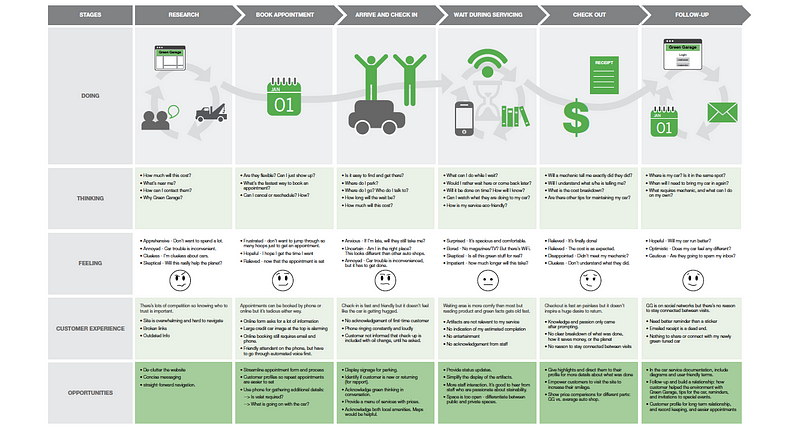
This article is for people who already have a basic understanding of journey mapping, but if you are totally new to the tool and how to create one, UX Lady has a great example where she uses the metaphor of baking as a way to map out experiences.
Journey mapping is a tool used often at the analysis phase of the design process to understand how a user would experience your product, from discovering the product to possibly coming back to it after their first time use. A UX designer stages the context in how the user will use their product, how they will feel and what their thoughts will be throughout the experience. It visualizes customer engagement and helps a company determine what they are doing well and areas of improvement in order to improve a holistic user experience. Along with this, journey mapping allows us to gain empathy by understanding a user’s behavior BEYOND the tasks they are presented with.
To begin, a journey map has two essential components when visualizing a user experience:
Touchpoints- Also called actions. What is customer doing and/or what is needed to get to the next step)?
Categories- This encompasses the touch points and breaks up an experience into simple steps.
Examples:
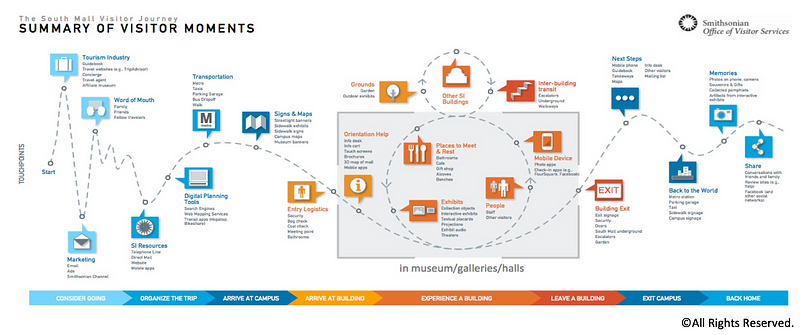
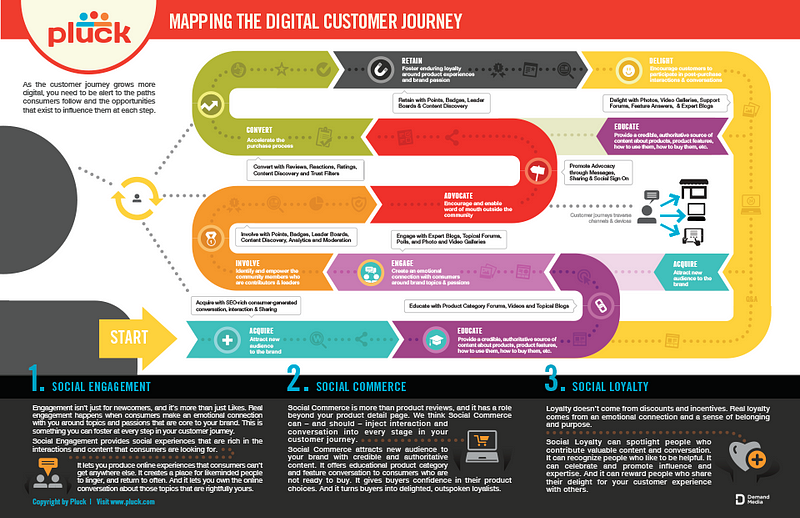
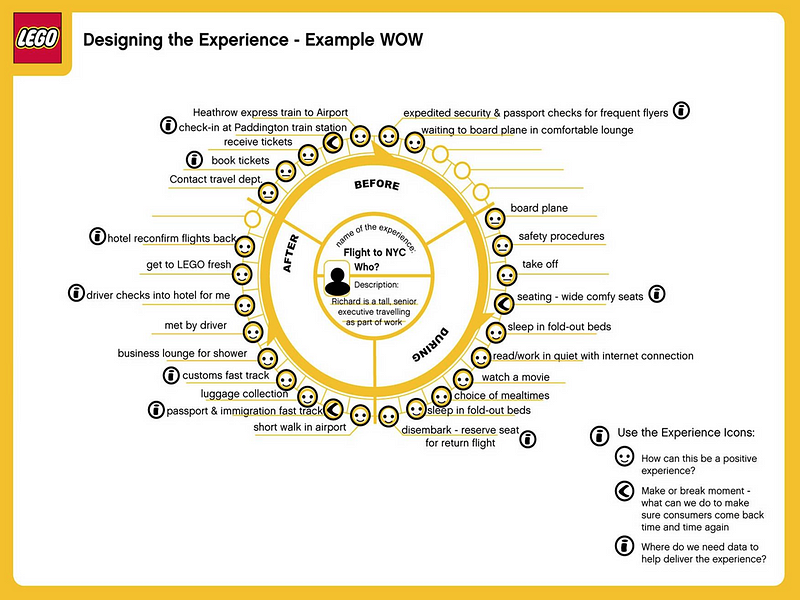
To understand nuances and create a layered experience, journey maps can also include:
Motivations- Why is customer motivated to keep going to the next stage? How are they feeling? Why do they care?
Questions- What are the uncertainties, jargon or other issues preventing customer from moving on to the next stage?
Barriers- What structural, process, cost, implementation or other barriers stand in the way of moving to the next step?
Adding more layers to the customer journey map makes us understand our users better to develop an acute sense of their actions and behaviors.
(source: 1)
Examples:
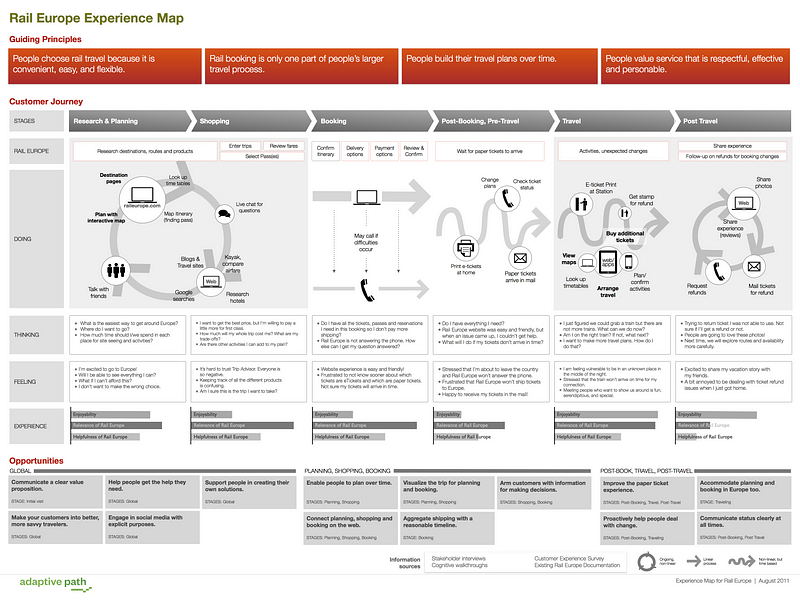
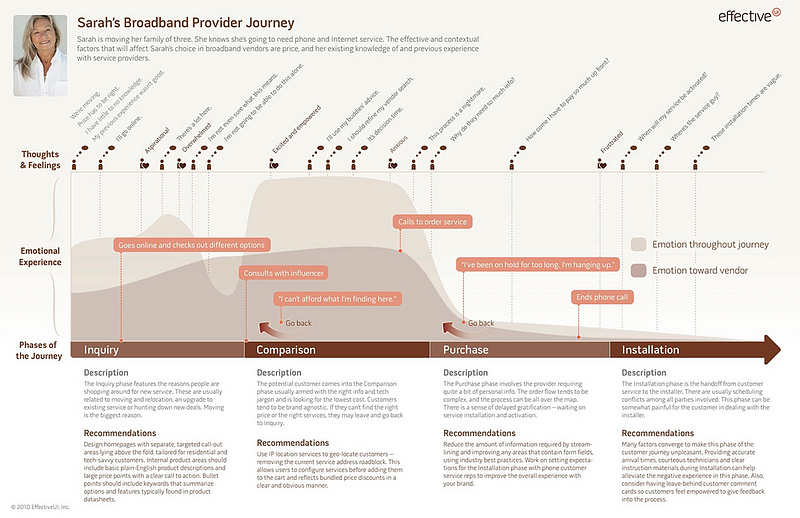
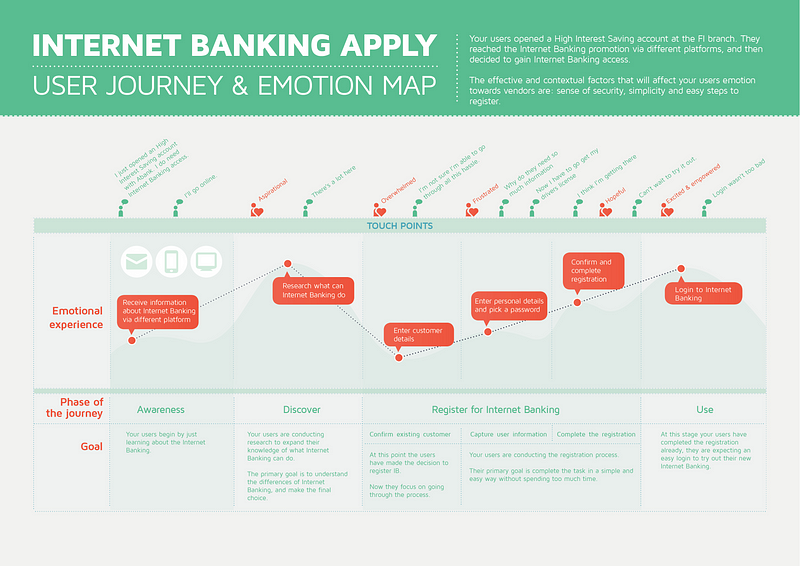
By utilizing this useful tool, here are key learnings you’ll gain from using journey maps in your process:
Empathy
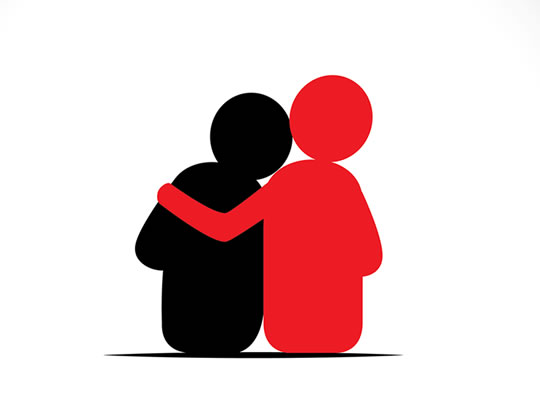
No matter how much you hear and do research on something, the one thing you may not be able to develop right away is empathy. If you haven’t personally experienced something, you won’t be able to feel as deeply as someone who went through x. You can only sympathize which doesn’t allow you to see the root of the problem, let alone feel their pain. Luckily by talking to (many) people you plan on designing for, there are many opportunities to develop empathy for them. The main method is interviewing and/or doing things with them (i.e card sorting, house visits). This allows you to organize information in a way that helps you design and puts you directly into the user’s shoes. A customer journey map can allow you to make sense of what an user goes through as well as the when and how. This will all lead to why someone is struggling and allows you to gain more empathy because you are envisioning yourself in the user’s mind, especially their struggles.
Ideal vs Current Experience
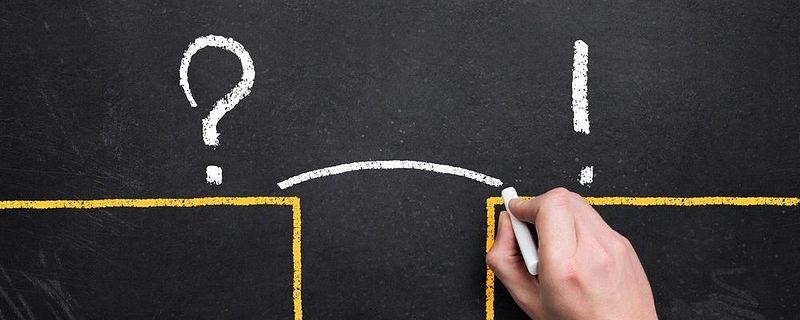
It’s important to understand the current experience of how something works in order to design for an ideal one. Mapping out the current experience allows you to visualize points of a user experience which need to be addressed. You can think about mapping touch points as high and low points (or emotions). High points are where the user feels most satisfied, neutral is no strong opinion but can be fixed to enhance an experience further, and low points are where the user struggles and are needed to fix. By breaking down the current experience and indicating points that need to be addressed, you can design an ideal experience that emulates steps of a current experience to tackle those low points. Comparing current and ideal experiences allows us to think about user experience on deeper level in which brings light to their behaviors and actions.
We need to understand the situation before designing for our users.
An example is in Google’s article Google’s Rules for Designers Working with AI where Josh Lovejoy and Jess Holbrook, two designers in the Research and Machine Intelligence group at Google ask this question to validate whether or not machine learning is the right tool for a job, “Describe the way a theoretical human “expert” might perform a task today”. They do this to identify what users expect from an AI-powered product.
Though I am using this example in a slightly different context, thinking about an ideal experience in a way which we believe is a good solution for us can allow us to lay out the right experience with the correct context surrounding the problem. This allows us better understand what our users will expect when we understand expectations and constraints surrounding an experience.
Scaling Experience → Provide Direction
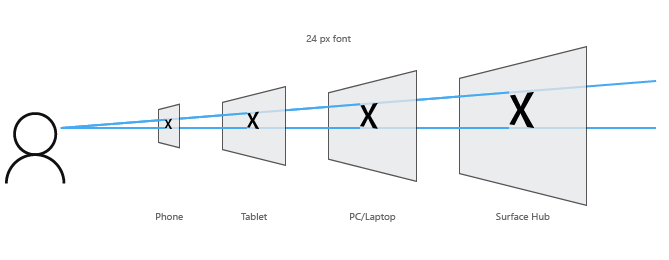
Mapping out the primary journey may only be for one use case, but how will it change? Will you need to alter steps of the product to cater to the needs and concerns of users in the future? Mapping out a framework will determine scalability and narrow down your product’s focus to address core user needs.
What can the experience map address? It might help to think about it in regards to a hook which, depending on the solution, will helps users to form habits and through journey mapping, can help you understand those complex user interactions which allow users to do so. Also, before mapping out the product experience, there needs to be validation to whether or not users would even use your product.
Situation:
- Will user even need this? (is it useful?)
- How will user discover product? (how will they enter experience, on-boarding?)
Trigger:
- What is core motivation to solving problem? (what will be the trigger to begin taking action + understanding basic behaviors?)
Action:
- How will user interact with product? (usability + visuals)
Feedback:
- What did user gain from experience? (feedback)
- What are the things that will make the user come back? (extend + investment)
- Will the user encourage others to use it? (entice)
Conclusion
A good customer experience will minimize problems on the business end and build trust with users.
Ultimate goals as a result of journey mapping to remember:
- Heightened awareness of user’s needs, wants, motivations goals and pain
- Allows you to listen and observe over designing solutions
- Designing for intentionality over yourself and bias
What I described above isn’t the only way to journey map. There are many possibilities to creating a framework that works for you and what you are trying to understand about your customer.
So the next time you design, think about whether or not a journey map will be a tool you use to gain empathy for your users. It will give you a deeper understanding of them if you have lots of user insights to organize and make sense of.
Thank you for reading!
If you liked my post, please recommend it ❤
Links to some other cool reads:
